[Retracted] A New Machine Learning Algorithm for Regional Low-Carbon Economic Development Analysis Based on Data Mining
Abstract
The development of information technology such as the continuous improvement of mobile Internet infrastructure and the performance of computers has made it easy to process and share information. The huge market demand for location-based information services provides huge impetus to the generation and development of mobile terminal positioning technology. Generally speaking, the main causes of climate change can be summarized into two categories: natural climate fluctuations and the impact of human activities which is a major measure taken by China to actively respond to climate change. This is a successful approach to actively explore the rapid development of China’s industrialization and urbanization, which not only develops the economy and improves people’s livelihood but also responds to climate change and reduces carbon intensity. Firstly, this paper mainly is aimed at the connotation of regional low-carbon economic development mode, studying the basic mode of regional low-carbon economic development, and analyzing the characteristics and applicable conditions of each mode. Secondly, based on the machine learning algorithm of data mining, the main mode selection of regional low-carbon economic development is discussed. Thirdly and finally, when choosing the regional low-carbon economic development mode, comprehensive consideration should be given to the economic development basis, energy structure, resource characteristics, industrial status, development mode, geographic location, and other factors. This paper studies the basic conditions and applicable conditions of regional economic development models. The conclusion shows that from the perspective of regional economic evolution, low-carbon economy can be regarded as the decarbonization process of economic development. It is an economic form combining its own characteristics and an inevitable requirement for the transformation of regional economy from other economic models to low-carbon economic models. And other factors of Selection of regional economic development foundation, energy structure, resource characteristics, industrial status, development mode, geographical location, were also discussed.
1. Introduction
In recent years, with the continuous decline of computer terminal price and the continuous improvement of its performance, smart phones appears and popularizes. The development of information technology, such as the continuous improvement of the Internet and mobile Internet infrastructure, makes it easy to spread and share information. In today’s society where data flow and information flow explode, deep data mining has gradually developed into a new trend [1]. Nowadays, mobile terminal positioning technology is widely applied in many fields such as emergency rescue, military positioning, peer network operation, and optimization. The huge market demand based on location information service makes the emergence and development of mobile terminal positioning technology have great power. The application of data mining technology in daily life can promote the development of social science and technology, improve people’s information processing ability, and play an important role in the information age. Under this background, the concept of low-carbon economy and low-carbon development came into being and quickly gained wide attention from governments and academic circles [2]. Different decoupling indicators can be distinguished based on the actual situation, and primary decoupling and secondary decoupling are defined. Primary decoupling refers to the decoupling between natural resource utilization and economic growth. Secondary decoupling refers to the decoupling of environmental pollution and natural resources from the traditional “high carbon consumption, high pollution and high waste” economy which has caused a serious resource and environmental crisis. Ecological destruction, environmental pollution, and resource depletion are the most widespread impacts of the global ecological crisis, which are directly manifested in the increasingly obvious greenhouse effect and a significant global warming trend. The technique for analyzing and processing large-scale data with the participation of computers and extracting the meaningful laws or patterns implicit in the data is data mining [3].
Human beings are facing increasingly severe resource and environmental situation. In the decades since the mid-20th century, with the outbreak of the new technological revolution, the global social economy has developed at an unprecedented speed. At the same time, the popularization of modern cellular mobile communication network and the establishment of global positioning system have made great progress in mobile terminal positioning technology, and the positioning accuracy has been greatly improved. Using data mining technology can not only diminish the data management costs significantly but also improve the efficiency of communication between them. Although low-carbon economy is put forward in the practice of human response to climate change, its essence is the result of human continuous reflection on the relationship between their own development and resources and environment. It is emphasized that economic development should be coordinated with resources and environment, and ultimately promote the transition from a carbon-based energy economy to a low-carbon and carbon-free energy economy. The key factor of climate change is the increase in atmospheric temperature caused by the emission of carbon dioxide and other greenhouse gases under the influence of human factors, which has been basically reached by the global scientific community. This is an important step taken by China to actively respond to climate change. It will actively explore the successful practices of developing economy, improving people’s livelihood, coping with climate change, and reducing carbon intensity in the rapid development stage of China’s industrialization and urbanization. It is of great significance to accumulate beneficial experience in promoting low-carbon green development in different regions. By calculation, the importance of multiple factors can also be compared [4]. Among the influencing factors of China’s carbon emissions, energy consumption ranks first. Economic growth ranked second and trade ranked third. The predecessor of machine learning method is the theory of statistical learning and optimization, which was born with the advent of computers. So far, a large number of algorithms have been proposed for different disciplines and problems, emphasizes that developed countries should provide adequate and sustained financial, technical, and capacity-building assistance for the implementation of adaptive actions in developing countries.
China’s decoupling of energy and carbon emissions will be in a state of growth linkage for a long time. China has made great efforts, but it still has a long way to go [5]. In China, as the first priority, development must vigorously develop the economy to catch up with developed countries and improve people’s material living conditions. This is obviously based on a large amount of energy consumption [6]. The transformation of enterprises and the progress of the industry all need the improvement of machine learning algorithms, so as to conveniently process huge information data and realize the development of society [7]. But in fact, data mining is more and more difficult to analyze because of its limited data processing ability, and machine learning algorithm is an interdisciplinary subject, that is, computer simulates human behavior and automatically acquires new skills and knowledge. At present, there are many studies on low-carbon economy and its regional evaluation, so it is necessary to sort them out systematically. Further clarify the connotation, goals, and paths of low-carbon development, and provide clear ideas for future research and practice [8]. Climate warming makes the production and consumption patterns in traditional economics no longer able to meet the requirements of the era of sustainable human development in the future. In the future, the economic development mode must be changed and a new economic model must appear. The low-carbon province and low-carbon city pilot program means that the country should give full play to the enthusiasm, initiative, and creativity of each region to explore a regional low-carbon development model with Chinese characteristics. Therefore, accelerating the pace of transformation and construction of the economic belt or elevating the construction of the economic belt to a national grand strategy will help to effectively connect with the “Belt and Road,” accelerate China’s economic and social development, narrow the gap between the north and the south, and achieve regional coordination in the eastern, central, and western region development [9].
2. Related Work
As the foundation of low-carbon economy, low-carbon industry has not been strictly distinguished by scholars in domestic research. Lin et al. put forward ecological footprint theory, which reveals the regional space of biological productivity needed to produce a certain amount of substances and absorb wastes generated by consuming these substances. It provides a method to judge the ecological carrying capacity of a certain country or region, so as to judge the greenhouse gas emissions generated by human activities, and demonstrate the necessity of developing low-carbon industries with the deterioration of ecological environment [10]. Peng et al. put forward carbon emissions in low-carbon economy will be a new indicator to measure economic development [11]. Zhang et al. put forward reviewing and depicting the scenario of long-term climate stability and decomposing carbon emissions into three factors: carbon dioxide concentration, energy efficiency, and economic activities [12]. Li et al. believe that low-carbon economy is based on technological innovation and institutional innovation. Only by reducing greenhouse gas emissions as much as possible can we achieve coordinated economic, social, and environmental development [13]. Yu et al. established the following: from the perspective of energy, low-carbon economy is regarded as an energy revolution with the goal of slowing down climate change, and its core is the technological innovation and institutional innovation of energy [14]. Fleming et al. established the following: using Kuznets curve to study the trajectory of human development from high-carbon economy to low-carbon economy, came to the conclusion that human development will pollute the environment at the same time [15]. Kuong et al. put forward the theory of urban mines. This theory believes that human beings can rely on technological innovation and other means to support the use of renewable resources [16]. Kapitonov believes that low-carbon economy should be regarded as the most important economic, social, and environmental revolution of this century. And that its significance will be more far-reaching than the industrial revolution [17]. Yang et al. constructed a method to describe the low-carbon economic development scenario at the urban scale and applied this method to the Shiga region of Japan [18]. Field and Derwent established the humanistic development goal of low-carbon economy and defined it as an economic form in which both carbon productivity and humanistic development have reached a certain level [19]. Wang et al. also emphasized its institutional attribute and believed that low-carbon industry is a new concept driven by institutional innovation and development ideas [20].
3. Basic Model for Regional Development of Low-Carbon Economy
3.1. Emerging Low-Carbon Industrial Cluster Model
This mode is to build new low-carbon industrial clusters, cultivate industrial clusters with low-carbon technology industries as the main body, reduce the production cost of low-carbon industries, and accelerate the knowledge spillover effect and technological innovation among enterprises. The method is simple and clear, and the conclusions obtained can make us intuitively understand the relationship between economic development and resources and environment and have a certain early warning function. Because the independent assumption of naive Bayesian algorithm is not true in most practical situations, its performance is worse than many more advanced machine learning algorithms. The emission of carbon-containing greenhouse gases mainly comes from the burning of fossil fuels, and the increase of carbon-containing greenhouse gases in the atmosphere directly affects the global climate change, especially the global warming, which leads to the global ecological crisis. The annual economic losses caused by global climate anomalies have gradually made people realize the importance of sustainable development. In response to global climate change, nonrenewable energy depletion, and other issues, countries all over the world regard developing new energy and supporting the development of emerging industries such as energy conservation and environmental protection as national development strategies to adjust economic structure and promote economic growth. On the premise of building an innovative country, through introduction, digestion, absorption, and independent innovation, form a group of low-carbon advanced technologies with independent intellectual property rights, and focus on the development, demonstration, and promotion of a group of common and key link technologies that have a major driving effect on the low-carbon economy. Therefore, under normal circumstances, the error of the training sample set with the closest distance to the sample to be classified obtained by using the nearest neighbor method is very large. For example, based on the location information, information such as the distribution of the main residential area of the user, the respective characteristics of the users in different shopping malls, the user’s preferred area, and the development of the area can be obtained. Although we are only in the early stages of predicting global warming trends, the ecological responses to near-term climate change are already clearly visible, as shown in Figure 1.
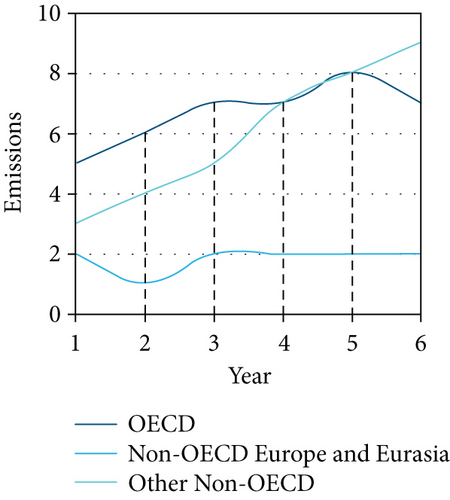
This kind of information has certain reference value for investors, real estate developers, market operators, and the government. At present, we should vigorously promote the regional low-carbon transformation to achieve green and clean development. Only by minimizing the pressure of economic activities on resources and environment can we finally achieve ecological civilization. The merge time interval is 2 s to 10 s for simulation, as shown in Table 1.
| Merge time interval | None | 1 | 2 | 3 | 4 | 5 |
|---|---|---|---|---|---|---|
| Positioning accuracy | 82.35 | 82.94 | 83.6 | 83.99 | 84.20 | 84.26 |
| Positioning time | 39.30s | 19.65 s | 9.80s | 6.7 s | 4.90s | 3.92 s |
| Merge time interval | 5 | 6 | 7 | 8 | 9 | |
| Positioning accuracy | 84.30 | 84.30 | 84.15 | 83.87 | 83.23 | |
| Positioning time | 3.26 | 2.80 | 2.45 | 2.16 | 2 |
Effective simulation of its positioning performance shows the specific simulation results, as shown in Table 2.
| Positioning area side length | 100 m | 200 m | 300 m | 400 m |
|---|---|---|---|---|
| Positioning accuracy | 80.90 | 83.35 | 84.33 | 84.99 |
| Positioning time | 0.90 | 1.83 | 3.29 | 4.91 |
When the K value of the positioning method based on K-nearest neighbor method is different, its performance is effectively simulated, which represents the specific simulation results, as shown in Table 3.
| K value setting | 10 | 20 | 30 | 40 |
|---|---|---|---|---|
| Positioning accuracy | 83.20 | 83.88 | 84.30 | 84.11 |
| Positioning time | 3.25 | 2.28 | 3.27 | 3.30 |
Compared with fossil energy, renewable energy has become cost competitive in many countries. Government leadership continues to play a key role in driving the growth of renewable energy, especially wind and solar power. 173 countries around the world have set renewable energy development goals, and 146 countries have issued support policies. Many cities, communities, and enterprises have taken the lead in launching the rapidly expanding “100% renewable energy” initiative, which plays a crucial role in promoting global energy transformation. Since then, more and more scholars began to pay attention to climate change, and its related research and international conferences have become more and more frequent. Global renewable energy structure is shown in Figure 2.
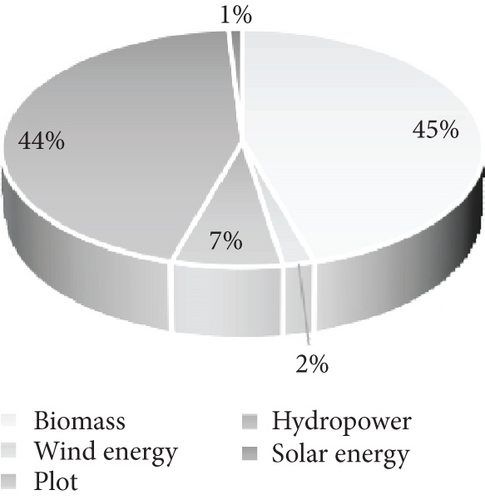
3.2. Traditional Low-Carbon Industry Maintenance Model
Most of the original industries are general traditional industries, such as agriculture, handicrafts, and tourism, and the carbon emission is not very high. The maintenance method is adopted for these industries. Among them, the policy changes cannot be quantified, the data in the process of quantifying the indicators of resource-based industries and high-energy consumption infrastructure are not complete, and there is no cointegration relationship in the modeling process of household consumption structure. For some linear nonseparable problems, although linear partition cannot completely separate the two kinds of points in space, it may cause fewer wrong points. This classification problem becomes an approximately linear separable support vector machine. Zhuang, an early scholar engaged in low-carbon economy research in China, believes that low-carbon economy refers to relying on technological innovation and policy measures. Implement the energy revolution and establish an economic development model with less greenhouse gas emissions. In recent years, the total amount and growth rate of energy production and consumption in remote areas are relatively large, as shown in Figure 3.
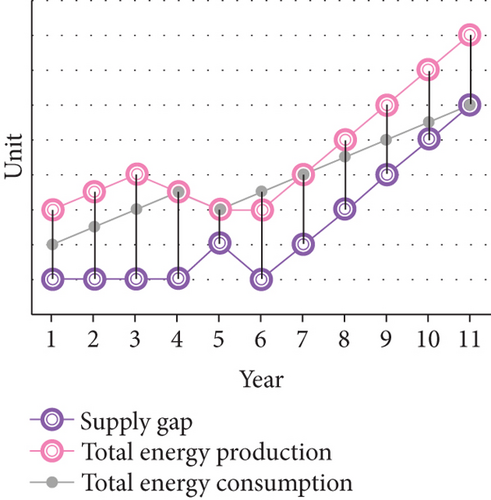
It is mainly manifested in industry, high-efficiency production, and energy utilization; energy structure and renewable energy production will occupy a relatively high proportion. China has adopted alternative technologies for fossil energy, mainly including alternative technologies for clean energy, renewable energy, and new energy. Improve energy efficiency and reduce CO2 emissions by reducing energy consumption. Adopt cleaner production and other technologies to improve energy efficiency, especially the clean utilization technology of coal. On the premise of ensuring crop yield, reducing fertilizer consumption plays an important role in reducing CO2 emissions in the process of fertilizer generation and protecting the environment. Through the adjustment of the internal and external structure of fossil energy, the growth rate of carbon emissions can be effectively slowed down, and China’s energy structure will be developed towards low-carbon energy. In other words, western countries have launched a number of mutually supporting algorithm linkage mechanisms and data classification creation mechanisms in the research field of machine learning algorithms, so as to improve the feasibility of data processing task with the help of multiangle model for practical training. With the progress of science and technology, the change of economic structure, and the development of energy consuming industry, the elasticity coefficient of energy consumption will generally show a downward trend, as shown in Figure 4.
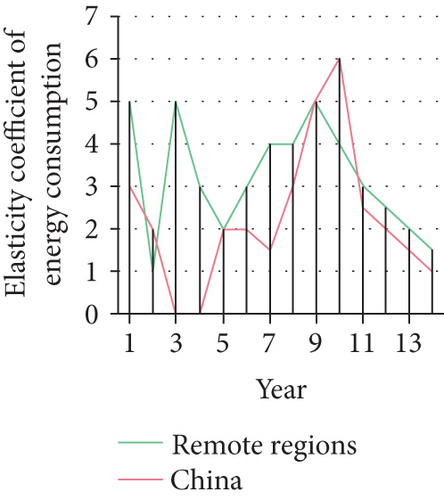
At this time, it can be known that the partition function with a larger distance between the sample point and the function value will have a far corresponding curve, and it is very likely that it belongs to the relatively positive class of the partition curve with a larger function value. In fact, the nearest neighbor method is a kind of training which is achieved by calculating the distance between two groups of sample point feature vectors in the training set and sample feature vectors to be distinguished. As far as developed countries are concerned, they have achieved a high level of human development and should and must achieve absolute reduction of carbon emissions while maintaining development. Based on the fact of climate change and the requirements of a low-carbon economic model, many scholars have begun to incorporate regional carbon emissions into the indicator system for measuring regional economic development. Its characteristics are that the effect of low-carbon economy can be seen quickly, without too high cost input, and it is relatively easy to implement.
4. Analysis on the Problems Existing in China’s Policies to Support the Development of Low-Carbon Industries
4.1. Lack of Systematic Policy System to Support the Development of Low-Carbon Industry
There is lack of coordination between low-carbon policies. The promulgation of relevant policies is due to different industries, different policy subjects, or to some social problems, which leads to the lack of coordination among various policies, and some policies become mere formality and lack of operability. At the national level, China’s national will to deal with climate change is constantly increasing, and it has repeatedly issued clear instructions to actively deal with climate change and develop a low-carbon economy. In addition, follow a principle, the principle of minimization. The energy consumption of public buildings is about standard coal, as shown in Figure 5.
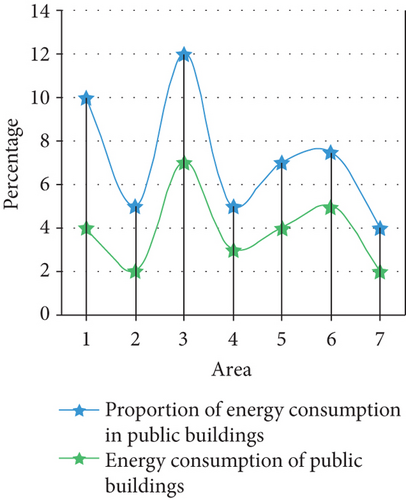
In this way, accurate analysis of data mining can be made. The least squares of the outstanding performance of the vector machine of the machine learning algorithm has an irreplaceable role compared with other algorithms. Therefore, the formula is used to calculate the longitude and latitude of the center of the merged area, and then, the data to be positioned for the secondary timing based on the support vector machine is continuously merged. The calculation of sample vector machine and the calculation of decision function vector machine are important links in the later budget. For the design of low-carbon economy comprehensive evaluation index system, based on the existing research, we can further learn from the idea and method of system dynamics. Integrate and optimize subjective and objective information to the greatest extent. Berkeley formulates comprehensive strategies from multiple perspectives. The main strategies adopted in operation and management include smart growth, improving the existing bus frequency and reliability, developing supplementary transportation system, and pricing strategy. The comparative analysis with other provinces and cities is shown in Figure 6. Relationship between building carbon emission and overall carbon emission is shown in Figure 7.

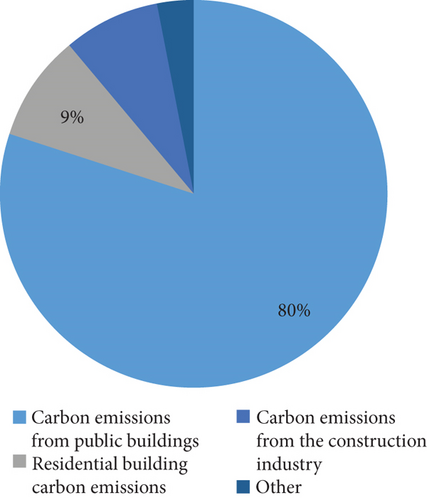
If the area is not suitable for large-scale industry, it can trade emission rights. Get funds and technology from economically developed coastal areas for ecological protection, and develop their own ecological agriculture and tourism, so that both sides can benefit. In recent years, China has implemented a series of policies such as the development of the western region and the transfer of eastern industries to the western region. There is a strong dependence on central investment and infrastructure investment, and investment in resource-based industries and real estate has become the main driving force for economic growth. Investment in high-end machinery manufacturing industry and new technology industry is low, and development is weak. Attribute features are the information extracted from the user’s geographic location, the number of microblogs forwarded by the publisher, and other personal information, through the calculation and transformation of this user information. Usually, some quantitative features can be obtained that can reflect the attention relationship between users from a certain aspect. For the low-carbon economic behavior of the same market entity, different policy supports can be found in different policy fields. However, due to the lack of coordination or consistency among different policies, it is difficult to accurately assess the comprehensive value and actual utility of a low-carbon policy during the specific implementation process.
4.2. Inadequate System and Insufficient Policy Support
The development of low-carbon industries is not only conducive to energy conservation and emission reduction, reduction of environmental pollution and response to climate change, and the realization of ecological civilization construction, but also conducive to promoting the upgrading and adjustment of China’s energy structure, industrial structure, and market structure, so as to achieve sustainable development. As one of the key areas in the country for energy conservation and emission reduction, remote areas must ensure that the national energy emission reduction targets are completed on time. Now the primary task of the whole region is energy conservation and emission reduction, vigorously eliminating some backward production capacity in energy and other industries and resolutely curbing high energy consumption. Blind development of the industry. Especially in the world’s major developed economies, it has been recognized for a long time that the traditional industrialization path with high energy and high emissions has brought enormous pressure to their own resources and environment, and it is an inevitable trend to change the way of economic development. In this application process, the weights need to be revised. The main method used is to use the error generated by the data calculation to initialize and output the expected value. Due to the increasing interval of merging the positioning data, the positioning accuracy is continuously improved until the highest value appears and gradually decreases. In addition, an appropriate operator should also be selected. Because the genetic BP neural network needs to be improved and optimized, it is required that the selected operator must follow the corresponding proportional algorithm to achieve local optimization. For developed regions, the key is to realize low-carbon economy, optimize industrial structure, and change the mode of economic development. It mainly depends on increasing the consumption of material resources to mainly rely on scientific and technological progress, improving the quality of workers and management innovation. To some extent, the economic structure determines the energy structure and, to a certain extent, the intensity of greenhouse gas emissions. The energy consumption intensity of the secondary industry is far greater than that of the primary and tertiary industries. The adjustment of industrial structure will inevitably promote the transformation of energy structure. Integrating the variable weight with the existing evaluation model can directly reflect the balance between the factors of low-carbon economic development in the evaluated area in the comprehensive evaluation results, which is helpful to improve the evaluation reliability of the existing research. Because climate warming and other changes brought about by it are still happening and unavoidable, we must actively deal with the public health, economy, quality of life, and other related risks caused by environmental change related to climate change. This area is mainly mountainous and sparsely populated, with a large proportion of planting industry and developed tourism. We should choose the maintenance mode of traditional low-carbon industry and increase the development of ecological and tourism industry. To a certain extent, these measures have reversed the situation that the development gap between the East and the West has gradually widened, but the economy in the upper reaches of the economic belt is growing rapidly. At the same time, a large number of infrastructure projects with high energy consumption and material consumption are concentrated. Topic model is an effective method to analyze large text. It analyzes the training corpus composed of documents with topic annotation. The lack of specific implementation rules or interpretation provisions leads to the lack of clarity and operability of fiscal and taxation and the dilemma that fiscal and taxation policies cannot be effectively implemented.
5. Conclusions
With the outbreak of the new technological revolution, the population has increased dramatically, the urbanization process has been accelerated, and the traditional “high carbon consumption, high pollution and high waste” economy has developed unprecedentedly. It has caused serious ecological and environmental crises such as ecological destruction, environmental pollution, and climate change, especially the increasingly obvious greenhouse effect, and the global warming trend has intensified. At the same time, the scarcity of water resources, the decrease of land area, the depletion of natural and mineral resources, the decrease of biodiversity, and the destruction of ecological environment are all problems to be solved in the context of the continuous increase of world population. Choosing a low-carbon economic development model suitable for China’s national conditions plays a vital role in the formulation of low-carbon economic policies. Especially in the era of big data, with the exponential growth of information, some data mining applications have gradually surfaced, and the problem solving has become more and more complicated and difficult. High accuracy and low computational complexity are obtained based on traditional research methods. As a multifield interdisciplinary subject, machine learning algorithm can effectively improve the positioning speed and accuracy, and the application effect is good. It makes an in-depth analysis of these two types of concepts and points out that the concept of low-carbon economy in a narrow sense emphasizes the characteristics of “phase” and “coordination” between elements of low-carbon economy. From the perspective of regional economic evolution, low-carbon economy can be regarded as a process of decarbonization of economic development. It is an economic form that combines its own characteristics and is necessary for the regional economy to transform from other economic models to low-carbon economic models. There are regional economic development basis, energy structure, resource characteristics, industrial status, development mode, geographical location, and other factors to choose.
Conflicts of Interest
The author declares no known competing financial interests or personal relationships that could have appeared to influence the work reported in this paper.
Open Research
Data Availability
The data used to support the findings of this study are available from the corresponding author upon request.




